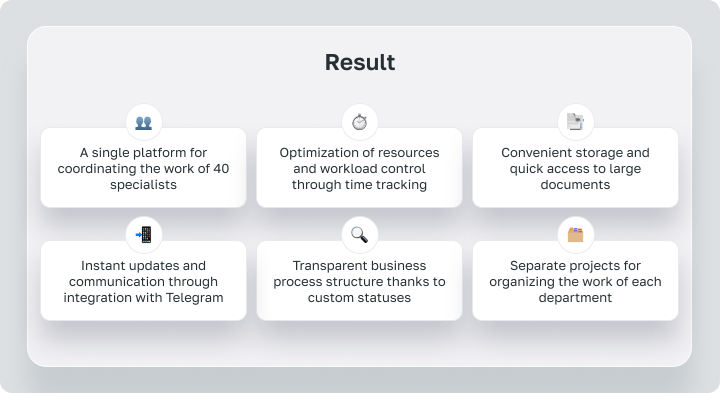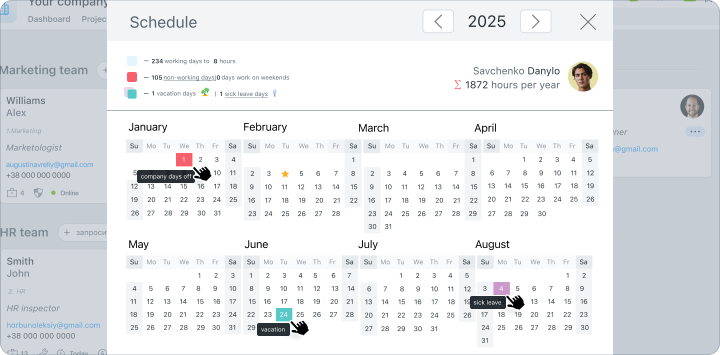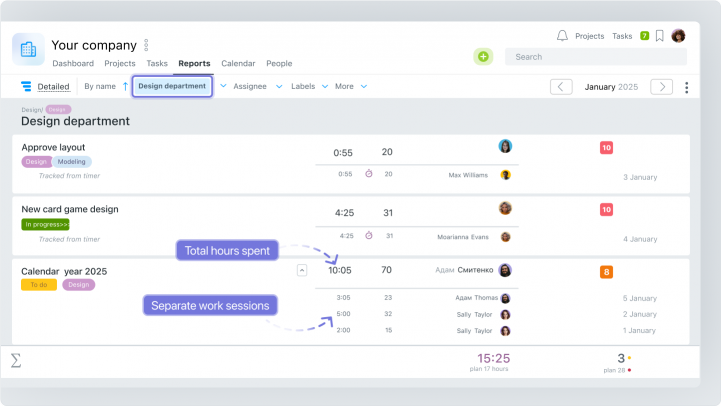ORNER has been operating in the Ukrainian market for 11 years and has a team of 40 specialists. These are designers, marketers, logistics, accountants and other departments.
The company is constantly growing and trying out new directions. The pace of development has shaped the company’s need to transparently manage various processes. ORNER implemented Worksection to maintain control and scale the business without chaos.

About the company
ORNER is a Ukrainian brand that develops and produces quality gifts at affordable prices. The company’s products include tableware, stationery, board games, textiles, etc. The brand cooperates only with Ukrainian manufacturers and controls every stage of the production process, from the idea to the finished product.
The team of 40 specialists successfully processes 100,000 orders a year, creating new designs and constantly testing new formats.
Request
ORNER used Trello before it started working with Worksection. After a while, the tool no longer met the company’s needs. Tasks accumulated in the form of lists, and it was difficult to track changes.
“Trello is more like a notebook for tasks, and we needed a tool with advanced functionality to systematize them”, — Olena Sidenko, Art Director at ORNER
In addition to chaotic task management, there were difficulties with file storage and sharing. It was impossible to upload large documents, which created problems for designers, marketers, and other teams.
Approving layouts, creating collateral and technical specifications requires constant access to the latest versions of documents. But because of Trello’s limitations, important information was often lost.
These challenges created a need for a platform that would systematize task management and provide convenient file management in a single system.
Client challenges
New system implementation
Problem: Switching from Trello to Worksection required learning a new tool along with revising established workflows. As Trello had become part of the daily routine, these changes caused resistance from the team and required time to adapt.
Solution: The company paid special attention to the adaptation process. Each employee was given enough time to master Worksection without unnecessary pressure.
“I’m sure that changes should happen organically, otherwise they don’t stick for long”, – Olena Sidenko, Art Director at ORNER
The company appointed a responsible person to manage the implementation process to switch to Worksection. Consultations with the Worksection manager helped to dive deeper into the system and understand how to better customize the tool to the needs of the team.
Worksection offers a convenient way to migrate from Trello thanks to the automatic data import feature. In just a few minutes, you’ll be able to transfer all your tasks and projects.
Now the company has created separate projects in Worksection for each business area. Tasks are divided into categories, such as current, new ideas, and pending.
Unifying work tools
The problem: Tasks were set via email or messengers, sick leave and vacation were noted in a separate service, and work files were stored in different tools. This complicated the management process due to the need for constant reconciliation between tools.
Solution: Worksection unified all processes in one system, simplifying task management and file sharing.
The functionality of employee schedules allows seeing who from the team is on vacation or on sick leave. This made possible to abandon other tools for controlling employees’ days off.

“The function of marking vacations and sick leave is great. It’s convenient to enter a task and see if the person in charge is on vacation or sick”, – Olena Sidenko, Art Director at ORNER
Work structuring
Problem: The lack of a monitoring system made it difficult to meet deadlines. It was difficult to coordinate many tasks with different statuses and priorities. As a result, tasks were delayed at certain stages.
Solution: The use of custom statuses helped to systematize workflows and respond quickly to problematic stages. Additionally, the team appointed a responsible person to monitor updates and deadlines in Worksection.

This significantly reduced the risk of missing deadlines and improved process continuity. This approach increased the predictability of tasks and minimized time lost due to inconsistencies in the team.
Workload control and planning
Problem: Lack of accurate data on time spent on tasks led to inaccuracies in workload planning. Deadlines were set roughly, and uneven workloads were stressful for the team.
Solution: Implementing a time tracker allowed the team to objectively measure time spent on tasks. This helped to plan deadlines more accurately and avoid overloading the team.
“It is important to be able to identify the moment when changes no longer improve the result. Thanks to the time tracker, you can see how much time is spent on each stage and whether it is worth spending more resources on it”, – Olena Sidenko, Art Director at ORNER.
The transparent reporting system provided real data for analyzing productivity and properly planning future projects. Understanding the team’s workload helped to allocate resources efficiently, optimize workflows, and reduce the risk of missing deadlines.

Lots of notifications and updates
The problem: Task update notifications were being sent to work emails, causing confusion and clogging inboxes. As a result, important messages were lost in the shuffle and the team could miss critical updates.
Solution: Worksection’s integration with Telegram allowed the team to receive notifications in a convenient format and respond quickly to changes. It simplified communication between task participants and eliminated the need to create separate chats for discussions.
“The integration of Worksection with Telegram has made our work much easier. All notifications are always at our fingertips, and we can instantly see updates on tasks”, said Olena Sidenko, Art Director at ORNER.
The mobile version of Worksection provides instant access to updates, which is especially important for quick reviews and approvals.
